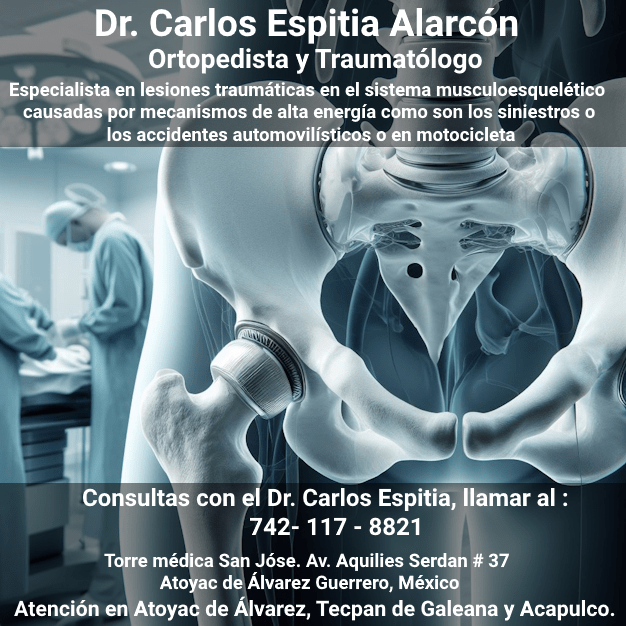Combat-Related Hemipelvectomy: 14 Cases, a Review of the Literature and Lessons Learned.
Fuente
Este artículo es originalmente publicado en:
http://www.ncbi.nlm.nih.gov/pubmed/26595599
DʼAlleyrand JC1, Lewandowski LR, Forsberg JA, Gordon WT, Fleming ME, Mullis BH, Andersen RC, Potter BK.
J Orthop Trauma. 2015 Dec;29(12):e493-8. doi: 10.1097/BOT.0000000000000398.
Todos los derechos reservados para:
Copyright © 2015 Wolters Kluwer Health, Inc. All rights reserved.
Abstract
OBJECTIVES:
Trauma-related hemipelvectomy is a rare and often fatal injury that poses a number of challenges to the treating surgeon. Our objective was to identify patient and injury characteristics that have proven difficult to treat, and to describe management techniques.
DESIGN:
Retrospective review.
CONCLUSIONS:
This is the largest published series of trauma-related hemipelvectomies. Our lessons learned may benefit civilian surgeons who are confronted with high-energy open injuries to the pelvic girdle. Although the decision to perform hemipelvectomy should not be taken lightly, this procedure can be lifesaving and should be performed in a timely fashion when indicated.
Resumen
OBJETIVOS:
La hemipelvectomía relacionada con el trauma es una lesión poco frecuente y a menudo fatal que plantea una serie de retos para el cirujano tratante. Nuestro objetivo fue identificar las características del paciente y de lesiones que han demostrado ser difícil de tratar, y describir las técnicas de manejo.
DISEÑO:
Revisión retrospectiva.
CONCLUSIONES:
Esta es la mayor serie publicada de hemipelvectomías relacionados con el trauma. Nuestras lecciones aprendidas pueden beneficiar a los cirujanos civiles que se enfrentan a las lesiones abiertas de alta energía a la cintura pélvica. Aunque la decisión de realizar hemipelvectomía no debe tomarse a la ligera, este procedimiento puede salvar vidas y debe ser realizado de manera oportuna cuando sea indicado.
LEVEL OF EVIDENCE:
Therapeutic Level IV. See Instructions for Authors for a complete description of levels of evidence.
- PMID:26595599 [PubMed – in process]


